The vehicle is designed to house four occupants. It has two sliding doors on each side making it fit narrow spaces in cities.
Element
The concept vehicle is designed with sustainability at its core, prioritising reduction. This includes reducing types of materials, details, and features to focus solely on essentials. Reducing also implies transparency, a central part to this concept, redefining premium as the art of revealing rather than concealing. The vehicle communicates sustainability through its innovative pixelated screen, which gamifies CO₂ tracking, raising user awareness and promoting eco-friendly behavior.Inspired by the timeless concept of the monolith, the design process explores themes of purity, presence, and authenticity, delivering a vehicle that connects emotionally while addressing future environmental goals.
Lasting Expressions: digital technology informing tomorrow's car design aesthetics
Sponsored by Huawei
The course focused on creating innovative, intelligent, and aesthetically pleasing vehicle concepts for the year 2035, emphasising creativity, advanced technology, and collaboration with Huawei's Harmony Intelligent Mobility Alliance (HIMA). The course aimed to address the evolving demands of the automotive market, driven by electric vehicle (EV) powertrains and digitalization, while maintaining high-quality, aspirational designs.
Students worked on vehicle exterior designs that aligned with keywords such as intelligent, unconventional, aspirational, joyful, digital, meaningful, China, and EU. The course encouraged a balance between rational and emotional values, fostering creativity and integrated technological solutions. The majority of the concepts targeted the Chinese market, with some also focusing on the EU.
The course was structured into several phases:
- Information Gathering & Concept Formulation (2 weeks): Students researched the brand and target users, dissected the project brief, and presented a concept description with an image board.
- Technical Definition & Ideation (3 weeks): Students generated basic 3D representations of technical constraints, developed at least three unique design themes, and presented a progress gateway.
- Project Development (3 weeks): Students focused on visualizing their vehicle concepts in key views, supported by rough 3D models, and received internal tutoring for design refinement.
- Presentation (1 week): Students produced an oral and visual presentation summarizing the concept, vehicle attributes, context of use, and value added to users.
Deliverables included 2D sketches, renderings, rough 3D digital models, posters, and a personal reflection paper. The course emphasized collaboration, with students working both individually and in teams, and included checkpoints with Huawei for feedback. The final presentation was concise, focusing on essential information and results.
Love Björklund
In collaboration with:

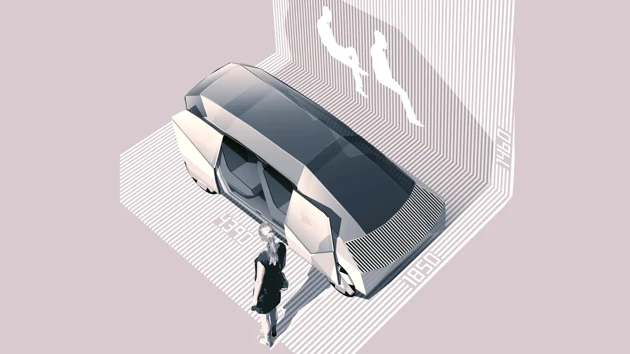
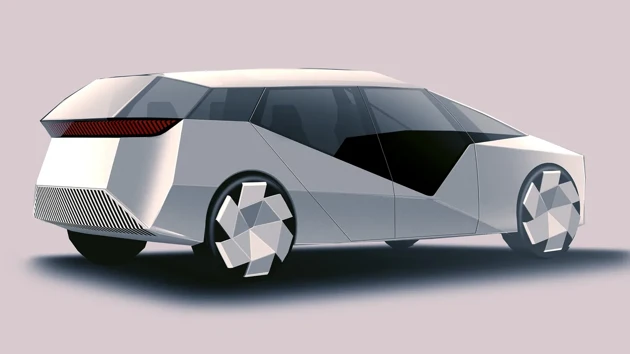
The raw steel body highlights authenticity, with milled grooves that serve both aesthetic and functional purposes. These grooves, doubling as cooling fins, expose the vehicle’s engineering, reinforcing the concept of transparency while also giving it a tech look. The grooves combined with the pixel display acts as the Huawei identifier element. It has two distinct looks when it's on and off.

See previous caption.
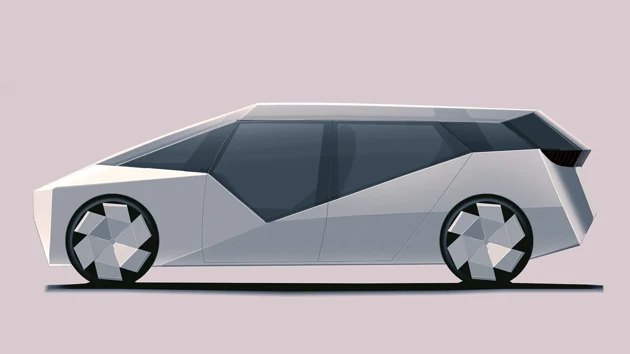
See previous caption.

Sketches from the design process exploring shapes and different directions to eventually landing on the three key sketches.

A key feature is a pixelated screen. This screen not only informs users about their CO2 emissions but also gamifies the experience, similar to smartwatches that track health metrics. Showing the user the CO2 impact on their journeys is about making the user aware and nudging them into a more sustainable lifestyle. Showcasing that intelligence is about being transparent and aware. It can also have other uses, such as communicating with pedestrians.
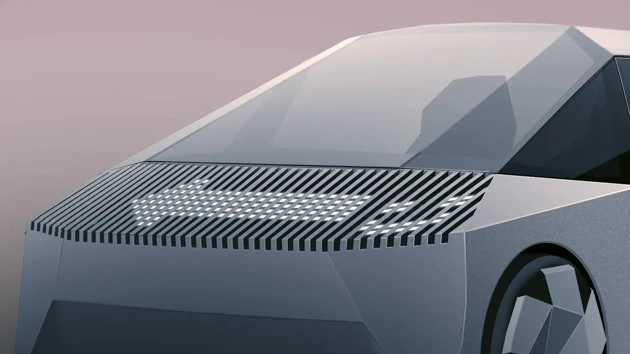
See previous caption.
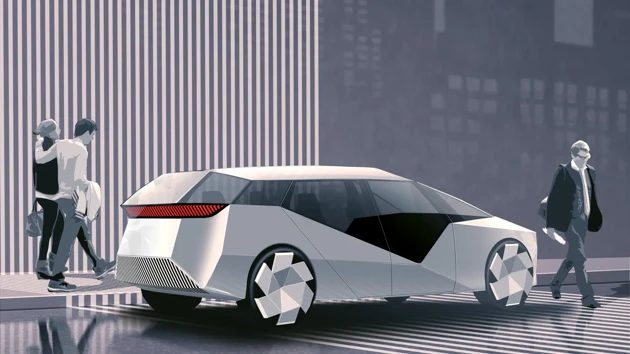
The target group is environmentally conscious millennials and Gen Z living in tier 1 cities in future china. Individuals who prioritize sustainability and value transparency in their products, seeking a modern, reliable vehicle that aligns with eco-aware lifestyles.







